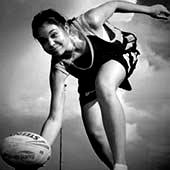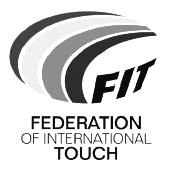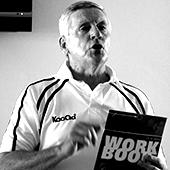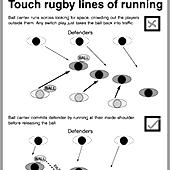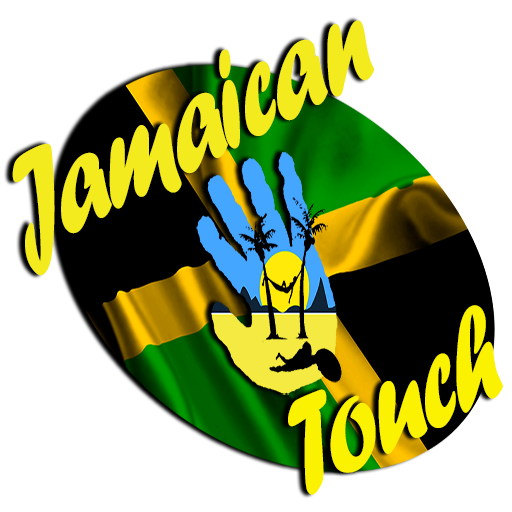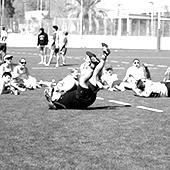A Basic Overview of the Game
Based on a mixture of Rugby Union and Rugby League the simple aim of the game is to score more Touchdowns than the other team!
When in possession your team tries to advance up the pitch without getting ‘touched’ by running forwards and passing the ball backwards (there is no kicking of the ball allowed in Touch)
A Touch is when a defender makes contact with the player in possession of the ball. This can be made anywhere on the body, clothing, ball or even the hair, but must be made with minimal force – penalties will be awarded for aggressive play or touches to inappropriate / sensitive areas!
Once touched the attacker must return to the point of contact (if they have passed it) and perform a Rollball – more details in other sections
Also once the Touch is made the entire defending team must retire at least 5 metres before they can be considered active again
Each team gets 6 possessions to try to score, if they haven’t done so then the ball is turned over
Turnovers also occur for breaches of the rules, dropping the ball, forward passes, leaving the field of play and several technical rule breaches such as incorrect Roll balls
No special equipment or clothing is required, but loose fitting uniforms are disadvantageous as the slightest touch counts. So when we say the tighter the better for clothing it’s not just men wanting to admire the ladies!!

